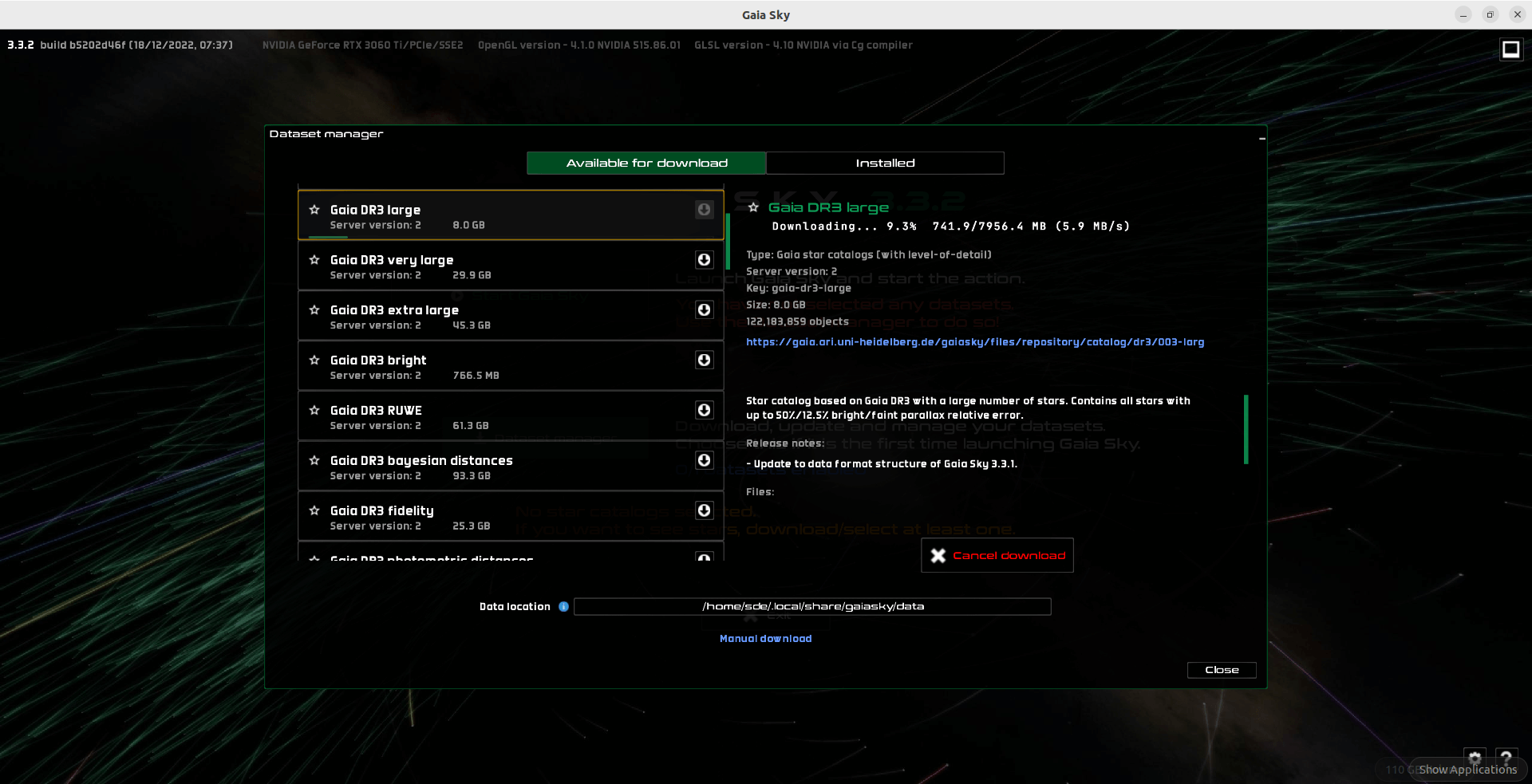Astronomy is a branch of science that deals with the study of celestial objects (including stars, planets, moons, comets, asteroids, meteor showers, nebulae, star clusters and galaxies) and other phenomena.
We were introduced to the world of astronomy by the venerable Sir Patrick Moore. For anyone who does not know, Sir Patrick was an amateur astronomer who presented The Sky at Night, the longest-running television programme, for over 54 years, and made an outstanding contribution to astronomy.
Gaia Sky is a cross-platform real-time 3D universe program. It’s developed within the framework of the European Space Agency’s (ESA’s) Gaia mission to chart more than 1 billion stars.
The Gaia mission was launched in 2013, performing astrometry, photometry and spectroscopy of about one percent of all stars of our Galaxy at very high precision. The mission is to create the most accurate and complete multi-dimensional map of the Milky Way. Gaia is a survey mission.
Installation
The project provides packages for Debian/Ubuntu, Fedora, as well cross-platform AppImage and Flatpak packages. There’s also a package in the Arch User Repository for Arch and Arch-based distros. And the project provides a Unix/Linux installer that starts a graphical interface where you can choose the installation location and some other settings.
The software also runs under Windows and macOS.
On the initial run, you’ll be invited to download data packs. You must download the base data pack (it’s only 81MB) as Gaia Sky won’t start without it. This base pack contains the solar system planets and moons, minor planets, satellites, orbits, constellations, the Milky Way, grids, locations, and other important objects.

Some of the Gaia star catalogs take a long time to download given their size. For example, the Gaia DR3 bayesian distances is over 93GB in size. However, the large data sets are not essential to get started.
Next page: Page 2 – In Operation and Summary
Pages in this article:
Page 1 – Introduction and Installation
Page 2 – In Operation and Summary
